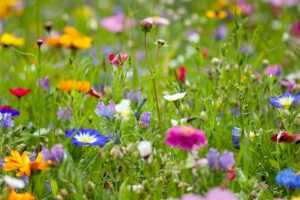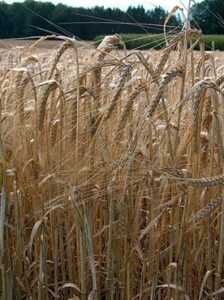Pesach Delivery Changes:
During the week of Chol Hamoed Pesach (Monday, March 29 and Wednesday, March 31), there will be no deliveries.
Those who receive bi-weekly boxes – note the three-week gap!
See the email we sent regarding your upcoming delivery dates.
Chag Sameach!
_________________________________________________
Springing Forward
Last Saturday marked the formal beginning of spring. Since the end of December, when we experienced the shortest day and longest night, the nights have been getting shorter. This Saturday, March 20th, we reached the equinox (Latin for ‘equal nights’) – that time of year when day and night are equal in length, astronomically marking the start of spring
The four seasons of the year are determined by the slight slant of the globe’s axis directed towards a point in space, somewhere in the vicinity of the North Star. This slight gradient causes half of the southern part of the globe to receive more sun than the northern part, while during the second half of the year, the northern hemisphere receives more sun. On a summery afternoon in the northern half (where Israel resides), the sun is high in the sky, whilst during wintery days it rises and sets in a low arch, thereby making a shorter orbit in the skies. This is why in summertime we enjoy longer hours of light from the time the sun rises, climbs high and finally sets, while during wintertime it spends less time in the sky, disappearing early and leaving us with long nights.
The two points in the year when the length of night and day are equal mark the autumn and spring. On both days, the sun is horizontal over the globe’s axis, rising exactly in the east, orbiting through the sky, and setting in the west precisely 12 hours later. Almost every place across the globe enjoys some 12 hours of light and 12 hours of darkness. In the northern hemisphere, autumn begins with the autumn equinox on September 22-23, with winter beginning on December 21, the shortest day of the year. Spring enters with the spring equinox on March 20-21, followed by summer which debuts on June 21, the longest day of the year. Here is a nice, interesting explanation about the equinoxes, explaining why the equinox isn’t exactly what we thought (but is still a reasonable facsimile thereof).
The first day of spring is a day abounding with symbols in ancient culture, with very accurate architecture: the Mayans celebrated spring’s entry by making sacrifices near the great pyramid of Chichen Itza in Mexico, which stood on an angle. Thus, on the day of equinox, the sunbeams resembled a snake of light descending from the top of the upper staircase to the bottom of the lower staircase. On the other side of the globe, the mighty Sphinx in African Egypt stood facing the sunset mark on the day of the equinox. This was an attempt to capture in rock the solitary moment as well as the exchange and the direction of light.
In the Bible, the term spring (aviv in Hebrew) defines a particular stage in the development of grain, the start of ripening when the stalk begins to harden. In our region, the first grain to ripen is the barley, and the month of aviv is that month when barley reaches the stage of development called aviv. There are those who claim that the word aviv derives from the word av (father) – delineating that this is the first – head of the family, marking the very first ear of grain during the period of ripening. Indeed, at the close of the first Pesach holiday, a celebration was held to mark the barley harvest season, by the ceremonial first binding of the sheaves. This “aviv” of the grain occurs when the rains have diminished, the sun is shining and the temperatures are on the rise. The short spring in the month of Nissan is indeed a fine time to go out of Egypt for a sojourn in the Sinai Desert, or in the words of Rashi: “This is what He indicated to them: See the kindness which He has done to you, for He brought you forth in a month in which it is fitting to go forth, not (too) hot and not (too) cold, and no rains.” (Commentary on Exodus 13:4)
Others believe that the origin of the word comes from ev – a fresh, young plant which is presently blossoming, such as ibei ha-nachal, the “green plants of the valley” mentioned in the Song of Songs, (6:11) and “odenu be’ibo,” (whilst still in its greenness), Job 5:12.
And blossoming does indeed provide the pervading hue of the spring season, as the writer Eliezer Smoli wrote, “Anyone who traverses Eretz Yisrael at this time of the year, whether on foot or even by car, will be met by a flowering abundance wherever his eye shall turn. Like one vast colorful carpet covering the flat land from the north to the Negev, from the east to the west, mountain and valley, hill and dell, immersed in a swell of every varied color. A true celebration of flowering at this season of the year. Spring in the very fullness of the word. Yet one who looks closely at the sea of bloom before him will discern, at the very outermost part, at the edge of the dotted tapestry, a withering that is slowly creeping up, and here and there are signs of balding. It appears that out of intention and knowledge, as it were, the abundance of flowering is concentrated in one short, finite period, for behold, the rains are over and gone and the sun has emerged from its sheath. The power of the east overcomes the west, day by day. The rainy season, which fought a diligent, daily all-out war, surrendered at last to the sunny days. Upon the horizon, a misty heat wave rises and an idle breeze breaks through to cross the Jordan and swoop westward—with the withering and wilting in its wake.”
Perhaps it comes as no surprise, but the spring equinox and the commencement of spring is still celebrated in traditions and not-so-different holidays in various cultures: our Passover, the Christian Easter, Japanese Buddhist “Higan” (literally: the other coast) and “Nowruz” (meaning: a new day), the Persian New Year. What these holidays share in common is their stress on the significance of meetings and passages, change and inner balance, renewal and exposure to life, and the avid possibilities for growth. These holidays herald the hour in which the border between opposites is razor-thin, offering us a moment to halt in the midst of life’s fast lane, open our eyes in a way which is new and perhaps different, clearing the way for development, change and a new path, as well as finding balance and tranquility before resuming the new race – this time towards summer.
The Seder night is also one of meetings and passages. One of my favorite ceremonies is the Hillel sandwich, binding together the bitter and spicy Maror with the sweet Haroset. Mixing together fruit and vegetable. When my daughter Shahar learned about the Seder customs in school, she wondered why we dip Maror in Haroset. There are quite a few answers in the various sources, but my favorite is the explanation she herself came up with: the bitter and sweet are eaten together so we can taste the entire gamut of the story at once, the bitter with the sweet, the anxiety and happy end, the distress and happiness.
In the field, too, this is a time of meeting and movement: the winter crops abide near the summer crops, while fertilization, weeding, planting, seeding and harvesting mix together, creating a very labor-intensive season. Not a lot of time to halt in the midst of the race, but the changes that the field undergoes as it prepares for the warm season definitely inspire lots of observation and eye-opening, introspection on the past and plans for the future.
Pesach, the festival of spring, ushers in the parade of agricultural holidays in Israel, with Nissan being the first month of the Hebrew calendar. During this holiday, the farmers are fortified with strength and the many hours of sleep they accumulated over the slow winter season where they were able to rest and restore their energy (and forget how hot last summer was…). In the fall, they sowed the grain in tears and apprehension, and now the barley has ripened to herald the time to reap in joy. At the close of the first Pesach holiday, a traditional celebration was held to mark the barley harvest season by the ceremonial first binding of the sheaves.
This ceremony and this season were also accompanied by great apprehension. As the entire season’s crops are about to ripen and become ready to harvest, the volatile weather placed tremendous pressure upon the farmers. In the words of the Yalkut Shimoni, “At Pesach, one will not find simchah (joy) written even once. Why? For at Pesach, the yield is judged, and no one knows whether this year will bring a yield or not.”
We join in the hope and prayers that this holiday and this coming season will be blessed with milk, honey, and the fruit of the land, to bring health, peace and happiness.
Chag sameach!
Alon, Bat-Ami, Dror, Orin and the entire Chubeza team
__________________________________________
WHAT’S IN THIS WEEK’S BOXES?
Monday: Carrots, green lettuce, celeriac/parsley root, red leaf lettuce, beets, cucumbers, tomatoes, white or purple cabbage/slice of pumpkin/red bell peppers, parsley/coriander/dill, potatoes/kohlrabi, new onions/scallions.
Large box, in addition: Green fava beans/snow peas/green garlic, kale/Swiss chard, broccoli/cauliflower.
Fruit box: Bananas, oranges, clementinas/pomelit, apples, avocados.
Wednesday: Carrots, green lettuce, celeriac/parsley root, red leaf lettuce, beets, cucumbers, tomatoes, parsley/coriander/dill, potatoes, broccoli/cauliflower/kohlrabi, new onions/scallions.
Large box, in addition: Green fava beans/snow peas/green garlic, white or purple cabbage/slice of pumpkin, kale/Swiss chard.
Fruit box: Bananas, oranges, clementinas, apples, avocados.




